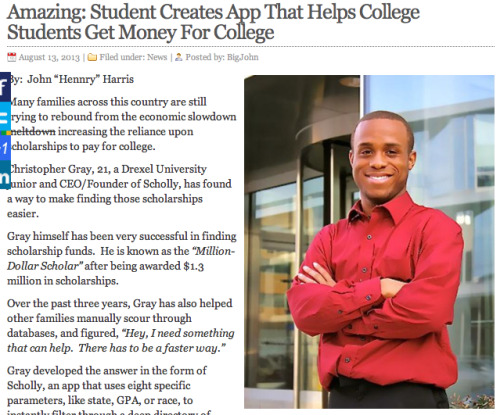People In The United States Pay More And Get Less Than Citizens In Other Advanced Countries.
People in the United States pay more and get less than citizens in other advanced countries.
Some 37 percent of American adults went without recommended care, did not see a doctor when sick or failed to fill prescriptions in the past year because of costs, compared with 4 percent in Britain and 6 percent in Sweden. Nearly a quarter of American adults could not pay medical bills or had serious problems paying them compared with less than 13 percent in France and 7 percent or less in five other countries. Even Americans who were insured for the entire year were more likely than adults abroad to forgo care because of costs, an indication of how skimpy some insurance policies are.
When Americans got sick, they had to wait longer than people in most of the other countries to get help. Fewer than half were able to get same-day or next-day appointments with a doctor or nurse; one in four had to wait six days or longer. (Only Canada fared worse on both counts.) But Americans got quicker access to specialists than adults in all but two other countries.
More Posts from Columbopossum and Others
We encourage you to share the link to this rather than reblogging the entire post (since this is frequently updated and we want to minimize the spread of outdated info!): bit.ly/FergusonAEM. Also, ...
![[threepanelsoul]](https://64.media.tumblr.com/5489dceb303511161be87cf17e4a17d9/tumblr_nak5nsvAzw1qewacoo1_500.png)
![[threepanelsoul]](https://64.media.tumblr.com/387af71d5ff4db67f705dd8cae6d26bc/tumblr_nak5nsvAzw1qewacoo2_500.png)
[threepanelsoul]

Christopher Gray, 21, a Drexel University junior and CEO/Founder of Scholly, has found a way to make finding those scholarships easier.
Gray himself has been very successful in finding scholarship funds. He is known as the “Million-Dollar Scholar” after being awarded $1.3 million in scholarships.
Over the past three years, Gray has also helped other families manually scour through databases, and figured, “Hey, I need something that can help. There has to be a faster way.”
Gray developed the answer in the form of Scholly, an app that uses eight specific parameters, like state, GPA, or race, to instantly filter through a deep directory of scholarships available for the prospective student.
“It’s extremely simple,” says Gray and that ultimately was the goal.
“The fact that it’s on the mobile (phone) really hits the audience,” says Soham Bhonsle, 21, a Scholly user and Drexel University senior. “It serves the need of its time. We want it on the go.”
Nicholas Pirollo, chief technological officer for Scholly, also offers that apps optimize searches compared to standard websites because they are more tailored to specific needs.
A recent study, conducted by Sallie Mae, shows that 39% of families used scholarship funds to pay for college during the 2012-2013 academic year and Scholly connects users with relevant scholarships in about five minutes. Scholly’s database is updated monthly to remove scholarships that are no longer available, add scholarships, and refresh deadlines.
There is money out there to go to school. Scholly has more than 10,000 downloads of the $0.99 app found in the Apple App Store and Google Play.
Scholly’s costs are intentionally positioned at an affordable price to serve more people that need it and boast a potential big payoff.
“Pay 99 cents and you may get $5,000 or $6,000 in scholarships.”
Scholly helps put the power of funding your education in your hands.
Hard to rise, and harder to fall: Poor college grads stay poor about as much as rich high school dropouts stay rich.
Look at the difference: In 1977 I bought a small house in Portland Oregon for $24,000. At the time I was earning $5 per hour working at a large auto parts store. I owned a 4 year old Chevy Nova that cost $1,500. Now, 36 years later that same job pays $8 an hour, that same house costs $185,000 and a 4 year old Chevy costs $10,000. Wages haven’t kept up with expenses at all. And, I should point out that that $5 an hour job in 1977 was union and included heath benefits.
an anonymous online commenter on the current economy. (via han-nara)
"I am deeply concerned over the impact it might have on our community," says Rep. Scott DesJarlais.
An appeal to my fellow Tennesseeans: Please, please, PLEASE stop electing people like this to represent us!
Paying for College: Then and Now
So baby boomers were born between 1946 and 1964
This means that they entered college between 1964 and 1982
The total average cost to go to Public College including tuition room and board ranged from $950 in 1964 to $2945 in 1982
While they were on college they could count on making at least $1.25 an hour in 1964 to $3.35 an hour in 1982
This means that spending the 18 weeks during summer working full time at minimum wage they would make $900 dollar in 1964 and $2412 in 1982
That means someone going to school 1964 would only have to work 40 hours during the school year to completely pay for all of their expenses.
Someone going to school in 1982 had it a little worse, they had to work for less than 160 hours during the school year to completely cover their expenses.
To put this in perspective in 2006 (the most recent year that the Dept of Edu reports) a public college education cost $11,034
The minimum wage was $5.15 in 2006
That means to pay for school in 2006 at minimum wage you would have to work just over 2142 1/2 hours to pay for school.
Working full time year around, without any time off, is only 2080 hours
-
 erinmcsave reblogged this · 11 years ago
erinmcsave reblogged this · 11 years ago -
 bitcoitus reblogged this · 11 years ago
bitcoitus reblogged this · 11 years ago -
 swissmisstery liked this · 11 years ago
swissmisstery liked this · 11 years ago -
 hugahospicenurse reblogged this · 11 years ago
hugahospicenurse reblogged this · 11 years ago -
 hugahospicenurse liked this · 11 years ago
hugahospicenurse liked this · 11 years ago -
 kuvitelturuusu liked this · 11 years ago
kuvitelturuusu liked this · 11 years ago -
 theliberaltony reblogged this · 11 years ago
theliberaltony reblogged this · 11 years ago -
 circeofjagd reblogged this · 11 years ago
circeofjagd reblogged this · 11 years ago -
 butchrosser liked this · 11 years ago
butchrosser liked this · 11 years ago -
 blondesforreagan reblogged this · 11 years ago
blondesforreagan reblogged this · 11 years ago -
 blondesforreagan liked this · 11 years ago
blondesforreagan liked this · 11 years ago -
 skeletonbirdling reblogged this · 11 years ago
skeletonbirdling reblogged this · 11 years ago -
 juneboogie reblogged this · 11 years ago
juneboogie reblogged this · 11 years ago -
 juneboogie liked this · 11 years ago
juneboogie liked this · 11 years ago -
 rebelling4freedom reblogged this · 11 years ago
rebelling4freedom reblogged this · 11 years ago -
 leftiecoast reblogged this · 11 years ago
leftiecoast reblogged this · 11 years ago -
 glossopetrae-blog reblogged this · 11 years ago
glossopetrae-blog reblogged this · 11 years ago -
 columbopossum reblogged this · 11 years ago
columbopossum reblogged this · 11 years ago -
 itsonemoremile reblogged this · 11 years ago
itsonemoremile reblogged this · 11 years ago -
 itsonemoremile liked this · 11 years ago
itsonemoremile liked this · 11 years ago -
 eyebrowpolice-blog liked this · 11 years ago
eyebrowpolice-blog liked this · 11 years ago -
 rapunzalis liked this · 11 years ago
rapunzalis liked this · 11 years ago -
 dark-chaotic-nightmare liked this · 11 years ago
dark-chaotic-nightmare liked this · 11 years ago -
 levieillard reblogged this · 11 years ago
levieillard reblogged this · 11 years ago -
 levieillard liked this · 11 years ago
levieillard liked this · 11 years ago -
 truth-has-a-liberal-bias reblogged this · 11 years ago
truth-has-a-liberal-bias reblogged this · 11 years ago -
 truth-has-a-liberal-bias liked this · 11 years ago
truth-has-a-liberal-bias liked this · 11 years ago -
 goddessnatasha reblogged this · 11 years ago
goddessnatasha reblogged this · 11 years ago -
 anarchistprincesss-blog reblogged this · 11 years ago
anarchistprincesss-blog reblogged this · 11 years ago -
 christianarghhh liked this · 11 years ago
christianarghhh liked this · 11 years ago -
 jmrodrig23 reblogged this · 11 years ago
jmrodrig23 reblogged this · 11 years ago -
 jmrodrig23 liked this · 11 years ago
jmrodrig23 liked this · 11 years ago -
 gigglesme reblogged this · 11 years ago
gigglesme reblogged this · 11 years ago -
 gigglesme liked this · 11 years ago
gigglesme liked this · 11 years ago -
 anotherword liked this · 11 years ago
anotherword liked this · 11 years ago -
 bruxabaiit reblogged this · 11 years ago
bruxabaiit reblogged this · 11 years ago























